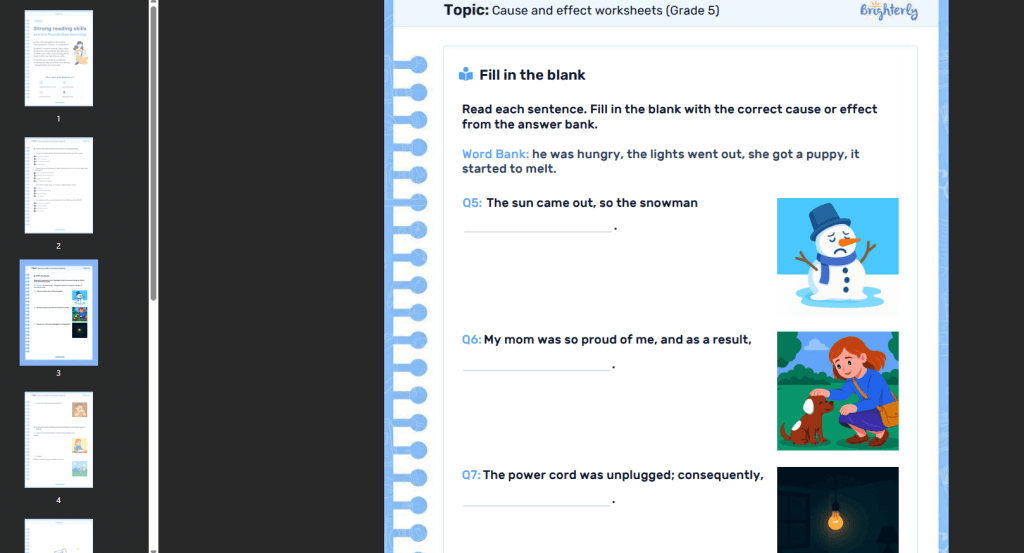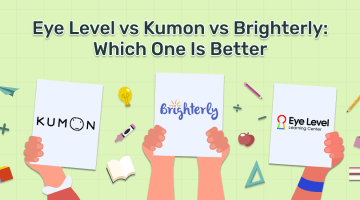How to Teach Kids to Write: 12 Ways
reviewed by Franz Jerby Delos Santos
Updated on October 15, 2025
Just imagine the exhilaration you’ll feel when your youngest first correctly handwrites their name. As a teacher, I know that, unfortunately, there can be a huge gap between the moment you start teaching writing and that joyful achievement. So, let me share all the best tips on how to teach kids to write and speed up the whole process.
Key points:
- Kids usually start writing at the age of about 3 to 5 by learning the basic 3-letter words.
- The most effective way to help kids start writing correctly is to take up private lessons with a tutor. Brighterly is the perfect option for that, with the focus on 1:1 work.
- You can also use several methods to speed up the process at home. These include a steady transition from writing letters to words and sentences, using creative prompts, and encouraging the kid to read.
When do kids start writing?
Kids usually start writing when they are aged between 3 and 5, though it can vary. The process usually starts with scribbling and then develops to recognizing their own name and writing the first common word, like “mom” or “dad.”
What are the 5 stages of learning to write?
The 5 stages of learning to write are as follows: pre-phonemic, phonemic, writing random letters, invented spelling, and conventional spelling. It’s essential to support kids at every step to help them go through each one successfully and more quickly.
How to teach a child to write? 12 working methods
- Use a tutor’s help
- Utilize worksheets
- Develop fine motor skills
- Relate letters to sounds
- Show writing instruments
- Connect letters into whole words
- Explain the purpose
- Encourage reading
- Turn it into a game
- Try creative prompts for writing
- Help them write a piece of their own
- Expand the context of writing
#1 Teaching kids to write with a tutor’s help
Best for: everyone

If you’ve ever wondered how to teach a child to write, working with a tutor can be your answer. The effectiveness of this method is huge primarily because it brings a good structure to the process. Specifically, when working 1:1, a teacher can deeply analyze the priorities of your kid, see their weak and strong points, and build the program accordingly.
Note: You can book lessons with ELA tutors to cover all aspects of the discipline, not only writing. Check the article for a deeper view into what is an ELA teacher.
And since the variety of tutoring websites is enormous these days, I’d like to simplify your search a bit and introduce you to Brighterly — the e-learning platform which can make a difference in your writing pursuits, and here’s why.
How to teach children to write with Brighterly?
First of all, the Brighterly math and reading platform is a 1:1-based, completely personalized service that covers grades K to 12, and fits even in the earliest learning stages. It accurately matched the US educational learning standards and also provides help with other ELA disciplines.
Including this specific service isn’t accidental, in fact, as it poses several distinct pro factors you’ll be pleased to learn:
- It can help in teaching kids to write regardless of your endpoint priorities. This means it will be good for a supplementary practice, an all-in-one help, or even as a homeschool writing program.
- Brigherly is known for its rigid approach when selecting its reading tutors. So, no surprise that those folks usually obtain years of experience, at least a Bachelor’s degree, and a good grasp of children’s psychology, even when working with the youngest kids.
- This service believes the best way to teach writing is to make the Brighterly reading program fun. So, expect lots of interactive tasks that closely follow your kid’s priorities — for better engagement and long-term memorization.
- Last but not least, Brighterly isn’t the e-service that will break the bank. It features four pricing plans, with the minimum option worth $17.3/lesson (when booking 3+ lessons/week). So, yes, you can choose the one that fits you.
Obviously, opting for online tuition is the most universal opportunity for anyone seeking how to teach children to write. However, you can also find some alternatives with the writing apps for kids — less personalized, yet always in their pockets.
#2 Teaching kids to write by using worksheets
Best for: those who prioritize learning through fun.
Worksheets are visually enticing printables that are widely used for both home-based practice and teachers struggling with how to teach a kid to write. The best part is that they encourage memorization through practice. Yet, good sheets approach a single topic from different angles, so creating many-sided competence.
If you now sit there wondering where to find that “good” worksheet, I’m here to help with that once more.
How to teach a kid to write with worksheets
Brighterly is your answer once again, as the site presents a collection of free reading worksheets. Yes, you got that right — you don’t need to be a user of the platform to download them, handy it is.
These are the reasons why you should use the Brighterly worksheets:
- They can be utilized in print or on your device, just as you wish.
- Align accurately with US state education standards to match the school program.
- Contain answer keys to avoid overburdening parents.
Note: Another good thing about Brighterly worksheets is that they come in a big variety, so you can easily adapt them to your writing IEP goals.
That said, here are a few tips on how to use these writing worksheets more effectively:
- Start slow. First, teach kids how to write with worksheets for about 10-15 minutes, and you’ll see how much they expect their next sessions.
- Never criticize the kid for the wrong answers. So, how to teach your child to write, then? Explain, encourage, repeat, stay their friend, not a punisher.
- Turn a worksheet topic into a game — write short stories about words they practiced, or illustrate a sentence they wrote.
#3 Teaching kids to write by developing fine motor skills
Best for: toddlers, preschoolers & early elementary kids.
Anyone asking how to teach a toddler to write, you need this one! Fine motor skills refer to kids’ abilities to use the tiny muscles of their hands. When well-developed, they will support youngsters in holding pens, flipping pages, and eventually writing.
How to teach kids how to write by developing fine motor skills
- Start by playing with tiny objects, like clay, beads, or building blocks. This can strengthen fingers and prepare kids for future writing.
- Drawing and coloring can come in handy, too. Those activities build the hand-eye coordination and help clarify how to teach a child to write on the line.
- You should also focus on the strength of their shoulders and back muscles. Although the connection isn’t always obvious, these body parts ensure better support when kids hold pens and pencils.
#4 Teaching kids to write by relating letters to sounds
Best for: anyone just starting with writing.
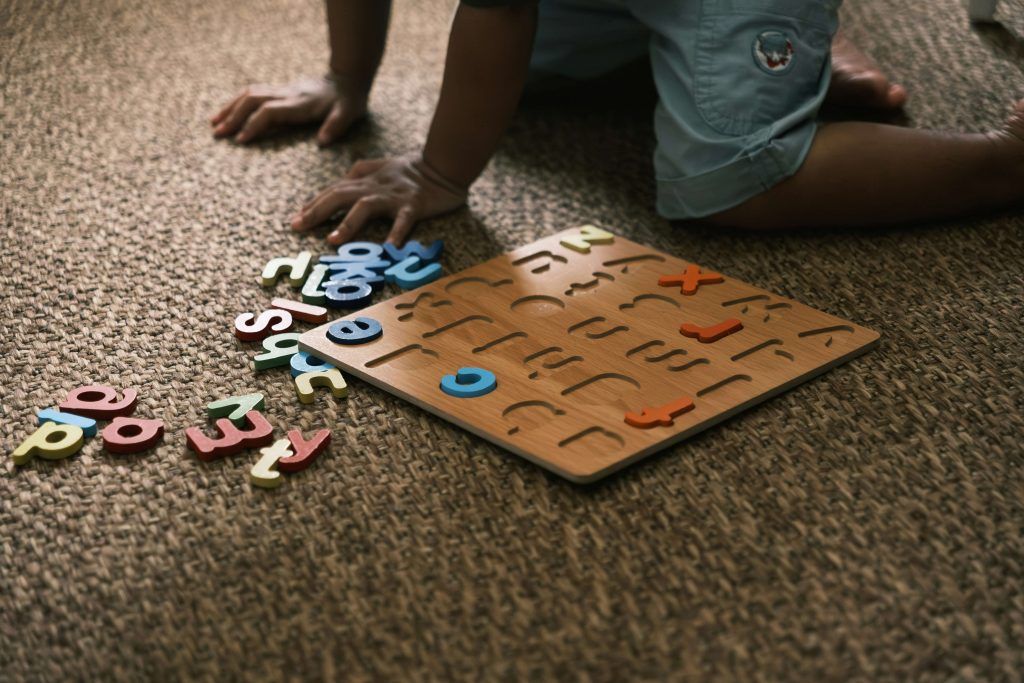
Kids should understand that letters aren’t just some random symbols, but the exact symbols meant to represent sound patterns. So, these practices can be introduced around the ages of 4 or 5, when kids first learn letter recognition.
How to teach writing in kindergarten through helping match letters to sounds
- Whenever your kid writes a letter, encourage them to say it out loud — the working tip on teaching kids how to write and reinforcing memory.
- Use some art to visualize the letters — sand or finger painting are great ideas.
- Use letter-sound games, like cards, where a child has to draw a random letter card and say what’s on it.
Note: The research showed that using sight, touch, and movement together helped children learn letter sounds more effectively.
#5 Teaching kids to write by showing writing instruments
Best for: those who have already improved their fine motor skills.
Introducing the variety of writing instruments allows your child to choose the one they are most comfortable with — be it a pencil, crayon, or a specific pen type. Then, it’s important to teach them the correct grip of the instrument. That’s essential to avoid hand fatigue.
Teaching children to write by introducing different writing instruments
- When teaching kids to write, don’t limit them to a specific instrument type (yeah, writing with a pen may seem more “correct”). However, having different tools at hand teaches kids to grip each of them, improving their experience.
- Crayons and markers can be the best choices for the tiny hands of toddlers or kindergarteners. By contrast, when a child prepares to go to school, they must be accustomed to writing with a pen.
Note: The research found that younger children use many different grip patterns, which reduce over time.
#6 Teaching kids to write by connecting letters into whole words
Best for: those comfortable with letters and sounds.
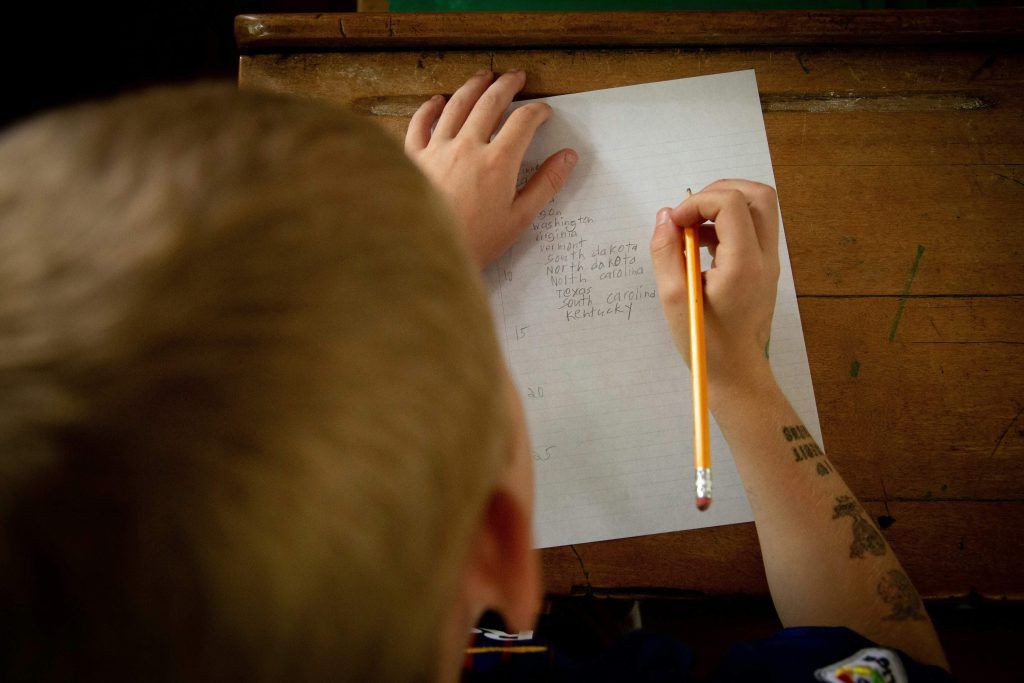
It’s the technique that actually helps kids understand why they had to learn those metaphoric letters. This word formation stage will also undoubtedly boost their confidence as they see the practical applications of what they’ve learnt so hard.
First steps for teaching how to write words
- First, write simple words that your child is well-familiar with. Their name, “mom” and “dad,” are the most popular picks. But you can also try other three to four-letter words like “dog” or “cat”.
- Before writing words on paper, you can encourage practicing them physically, using toy letters you previously utilized for training.
#7 Teaching kids to write by explaining the purpose
Best for: those who need motivation.
Oftentimes, kids start asking, “Why do I need to write?” So, how to teach kids to write neatly then? Most importantly, you should create the context they need. Explain that just as a spoken word, writing can be used to persuade, explain, inform, or express. So, eventually, writing is a power they should acquire.
How to help kids write by explaining the purpose
- Show that writing can be used in day-to-day life. For example, you can ask them to write a shopping list, a birthday card, or a thank-you note to bring the value.
- For anyone asking how to teach writing to elementary students, you can move to more complex practices, like creating simple posters, journals, or newspapers.
Note: The research found that students’ motivation to write, their perceived value of writing, and their self-beliefs as writers significantly influenced their writing outcomes.
#8 Teaching kids to write by encouraging reading
Best for: those wondering how to teach kids to read and write simultaneously.

Reading and writing go hand in hand, and mastering one of these pairs cannot be done without working on the other. So, the next time your child cuddles in their chair in the book, remember that they also improve their vocabulary, grammar, and spelling abilities.
How to help my child with writing skills by using reading
- Make reading active. Turn it into a daily practice where you read aloud with your kid and then discuss the gist.
- Whenever you encounter some interesting word usage, ask the child what they think about its purpose.
Note: For all the schoolers out there, you can also check the current progress by simply addressing these reading tests. They are free for use, illustrated, and you’ll get the score after completing them.
#9 Teaching kids to write by turning it into a game
Best for: reluctant readers & kinesthetic learners.
This method is quite universal as all youngsters enjoy playing games. So, it will equally appeal to toddlers or those wondering how to teach writing to first graders. Most important — they shouldn’t perceive writing as some “task”, but as a “challenge” they have to tackle to win a prize.
Teaching kids to write by using games
- Hide cards with letters around the room. When a child finds one, they must say the letter, its sound, and write it on paper before finding the next.
- Start a story with a single sentence. The kid should add a new sentence in writing. Read the story aloud at the end and have fun together.
Note: The research found that game-based learning had a moderate to large effect on cognitive, social, emotional, motivational, and engagement outcomes in early childhood.
#10 Teaching kids to write by utilizing creative prompts
Best for: kids who flourish on creativity.
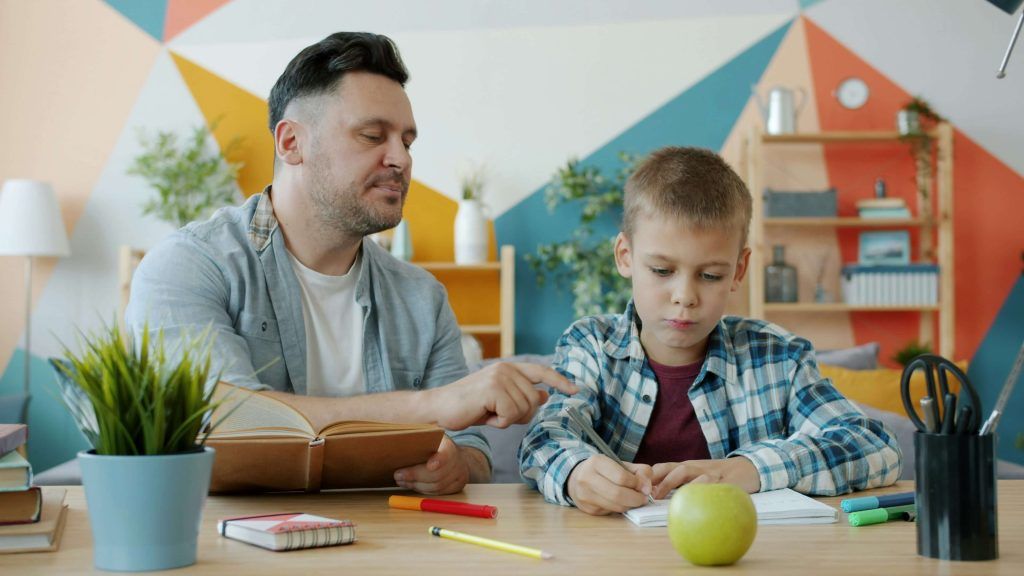
The trick with this method is to make it personalized. For example, if you’re just starting and looking for how to teach kids to write letters and words, you can give your child a sentence and ask them to fill it with a single relevant word. Just make sure that the sentence is about something that is genuinely interesting to them.
How to teach kids to read and write through creative prompts
- Use visuals, such as animal cards. Show an image at a time and ask your kid to describe what is happening in it.
- Let them draw their story first or act it out, then write a few sentences describing what happened.
#11 Teaching kids to write by creating their own pieces
Best for: those with a good knowledge of letters and words.
Kids adore making stories! So, the next time your child does it, ask them to put it down on paper. Then, you can discuss and analyze their stories together.
How to teach a child to write sentences by making up stories of their own
- Let them tell their story out loud first; then guide them to write a few key sentences.
- Highlight new or “juicy” words from the text they’ve read earlier. Then, encourage the child to use them in their writing.
Note: This study emphasizes that storytelling is an efficient and powerful language activity that impacts reading, writing, and social skills.
#12 Teaching kids to write by expanding the context
Best for: those moving from basic to more advanced writing practices.
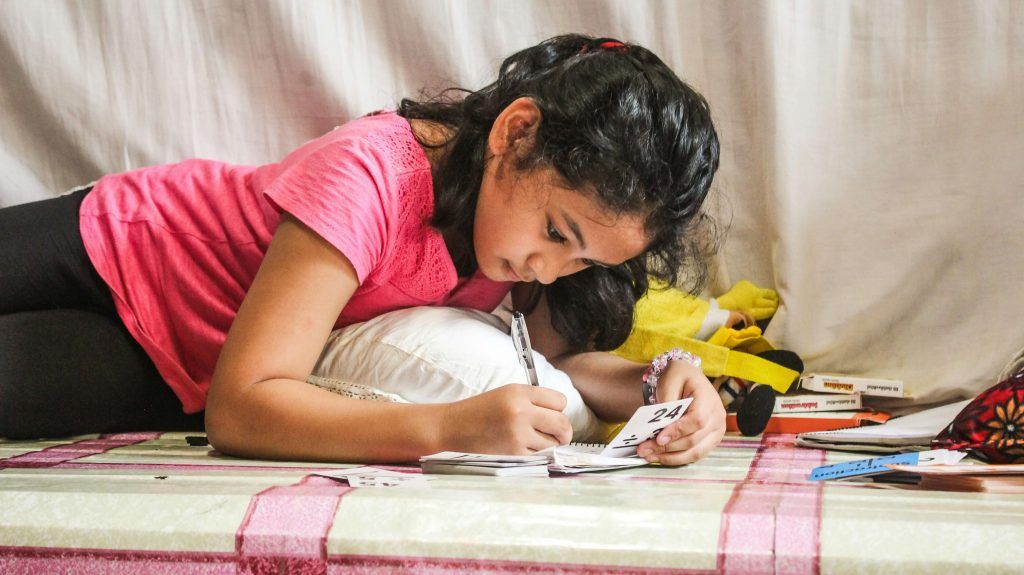
Once a kid can write sentences, has a good vocabulary, and can make up stories of their own, you can start explaining how literature works. Your excursion can include explanations of styles, forms, and purposes of varied literary texts.
Teaching kids to write by explaining the context
- Before asking them to write a story, discuss the setting, characters, or problem together.
- Write a short paragraph aloud, explaining how you think about the who, what, where, and why as you write.
What is the easiest way to teach a child to write?
The easiest way to teach a child to write is to create a structured progression plan. Start with hands-on activities that can build motor skills. When teaching to trace letters, also show their correlation to sounds. Then, steadily move to writing letters, words, sentences, and finally texts.
How to teach kids to write their name?
Start by showing the name and saying each letter, then have the child trace it on paper. Use materials like playdough or magnetic letters, practice one or two letters at a time, and celebrate progress to make them more motivated.
Conclusion: Easy writing help for kids
While teaching writing can take some time (and it surely will!), having handy writing tips for kids will speed up the process and make it smoother and stress-free. In this article, I assembled 12 tips that will fit different ages and experience levels, so you can easily choose the one most appealing to you.
But remember — superb yet fast results require all-around help. That’s when tutoring assistance can be your solution. Remember about Brighterly tutors? They are there to assist you at any stage.
Book free reading lesson and see how they can help you!




